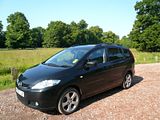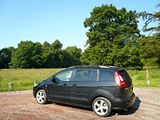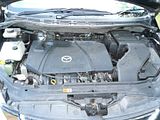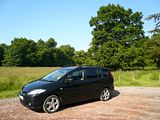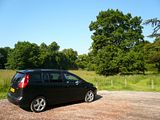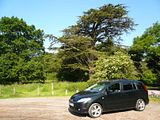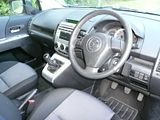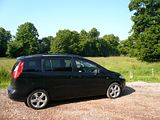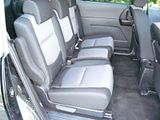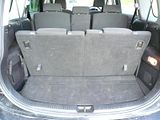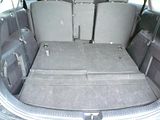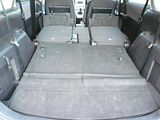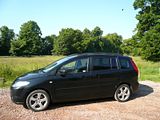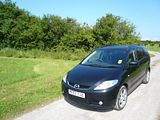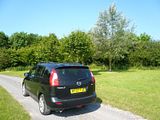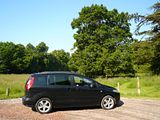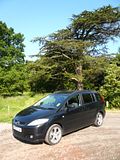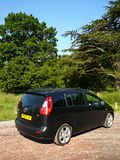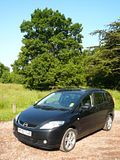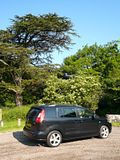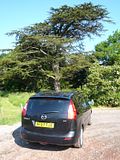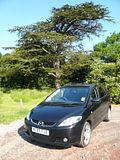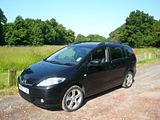
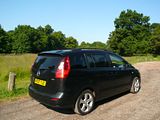
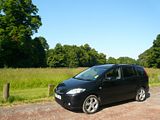
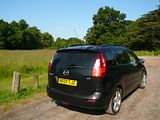

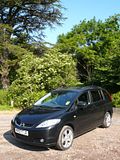
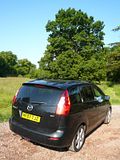

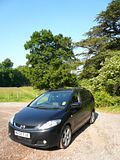


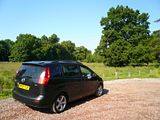
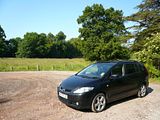


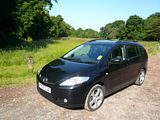

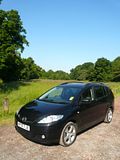
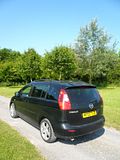
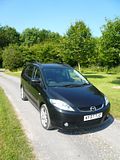
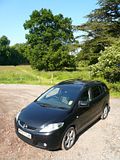

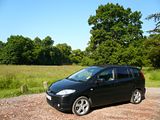
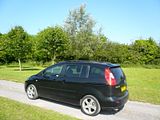
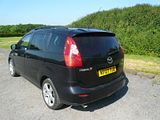

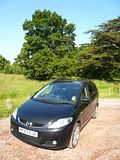
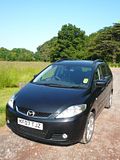
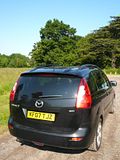
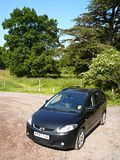
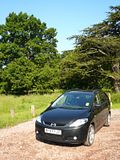

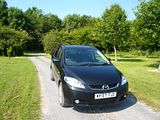

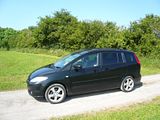
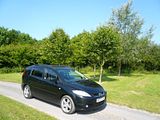
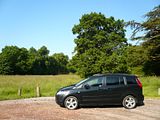
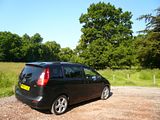

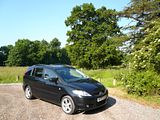
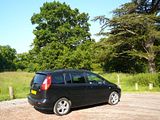
The 2.0 litre engine develops 144 bhp. Allegedly. Like so many modern petrol engines, these days it is hard to believe the quoted power outputs, as the figures just do not translate to the sort of liveliness that you would expect on the road. I would not describe the Mazda 5 as fast, but nor was it embarrassingly slow. Acceleration from rest was average, but the engine is refined, and it pulls well, at almost all speeds suggesting that it is optimised for torque, and fuel efficiency, and doubtless emissions. At a steady speed on the motorway, there was a slight whine noise that used to be more common in cars 20 years ago, but otherwise the Mazda was quiet and a decently relaxed motorway cruiser. Getting the best out of the engine requires plenty of use of the gears, and that is no hardship, as the gearchange – operated by a lever mounted at an angle on the lower part of the centre of the dash – is very good, with precise movements between the ratios. The gate between the lower 4 gears is quite small, but the move over to fifth is further away, but there never seemed to be any doubt that the undesired gear had been selected. The Mazda 5 shares much of its platform with the 3, which means it also has much in common with the Focus, and this is evident in the road manners. The steering is good, though not quite Focus-good. It is just that bit too light perhaps to have the real feel that is so impressive in the Ford. The same can be said for the handing: good, but the Ford is better. Just. No issues with the brakes, and there is a conventional pull up lever handbrake between the front seats. The 5 rides well, which is perhaps not unexpected, given the relatively long wheelbase.
The cabin of the 5 is typical 21st Century Japanese. Slightly plasticky, but all of a decent quality, and you can tell that they have tried. The upper part of the dash is moulded in a slightly dappled texture and there is an aluminium effect trim around the gearlever area and the centre of the dash surrounding the stereo and air con controls. The main instrument binnacle contains the speedo, rev counter and minor gauges, along with a good scattering of warning lights. Intuitive column stalks do wipers, lights and indicators. the wipers got a good test in a re-enactment of Noah’s flood which happened early in the test, and they coped well. The steering wheel is the same as that in the outgoing Mazda 3, but the overall dash design is not as stylised and does use different switches. There was something wrong with the radio, as although there was plenty of signal, there was also bad distortion, but I suspect that this was a consequence of 2 years of rental car abuse rather than anything else more sinister. The radio display console shows the message “Hello” when first powered on, which is a slightly unusual nice touch. There is a lipped shelf in front of the passenger which you could use for storing small items, and then a fairly meagre glove box. A large central cubby between the seats and ubiquitous door bins mean that the 5 is adequately provided with space for family clutter which would surely accumulate in a car of this type. There are swivelling picnic tables on the back of the front seats, and also cubby holes and cup holders for rear seat passengers. With very large door mirrors, all-round visibility is excellent, making this an easy car to see out of, and to park up.
What really distinguishes this car from its competitors are the rear sliding doors. These do make access to the rear seats very easy indeed. There are two “proper” seats in the middle row, and then a smaller central cushion, which can be lifted to one side and tucked under the base of the nearside central seat, allowing you to have two seats in the middle row, with a space between them. You can choose to alter the backrest angle of these seats, allowing them to be somewhat reclined, should the rearmost passengers not mind, or there no be any such people on board. The rear seats are not particularly large, but then this is not a large car, so you would hardly expect otherwise. Access it easy, because of the rear sliding doors, but there is not a huge amount of space in there for adults – but then that is also true for the Zafira and the Verso, and many of the other competitors do not even have these seats. They can be folded flat into the boot floor – split asymmetrically – by pulling a tag on the rear of the seats. Doing this extends the boot from pretty small to pretty decent. Folding the central row of seats down as well makes for a vast luggage area. There is a small amount of space in a tray under the floor at the back of the car, along with a space saver spare wheel. The jack is cunningly stowed under the cushion of the central row of seats.
“Sport” might not be the term you’d associate with a car of this type, its dynamic qualities not withstanding. In Mazda-speak, it is the third level of trim available in the range, and endows the 5 with 17″ alloy wheels, traction control and stability control, climate control, auto-sensing wipers, cruise control, a 6 CD autochanger and two additional speakers, climate control, privacy glass on the side rear windows, and what they call a sports body kit which means a different front grille, spoiler and front fog lights (adding 60mm to the overall length), rear spoiler and LED rear lights. This augments features such as the roof rails, leather-covered steering wheel, rear seat armrests that come in the TS2 model. That little lot seems like a decent list of extras to me.
Unlike “Auto Express”, I have not yet driven the new Scenic and Verso, so I cannot comment on how the 5 fares against them, but as both are fairly cautious evolutions of the previous generation models, both of which I have driven, I can guess. I suspect that the Mazda would be better to drive than either of them. If you want 7 seats, then although the latest Verso has a bit more space in it, you are really looking at the Grand Scenic, and that is considerably more expensive. The C-Max, a car I have not driven recently, impressed me at the time, and would also be good to drive. Better, probably. But it only has 5 seats. So that makes it look like the Mazda could still be a real contender. And then I remembered that day in Illinois, following two bagged up prototypes, and the Kia. I liked the Rondo that I drove in the US. Part of the attraction was the 2.7 litre V6 engine, which is a US class unique. That engine is not available in Euro spec Carens models, which have to be content with a 2.0 petrol or diesel. The Kia is cheaper, and probably better value, but in European spec, probably not going to be as good to drive as the Mazda. I think, therefore, that means the little Mazda is still worth serious consideration for those who want a car of this type.




